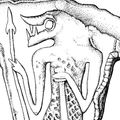every little helps!

I need your help! I have made informative videos about history, paganism and traditional cultures from around the world for years. My channel depends on patrons to continue. As a patron, you get merch discounts and access to exclusive content! Do your bit to support unbiased European history broadcasting.
Subscription Tiers
$3
USD monthly

Low level supporter
41 subscribers
$10
USD monthly

Very Valued Patron
You are really making a difference and helping me to keep doing this and spreading valuable information about the gods, and religions of pre-Christian Europe
41 subscribers
$25
USD monthly

Big Spender
If there were more people like you then the world would be a better place
6 subscribers
$100
USD monthly

King
You are a king; a ring breaker showering gold on a grateful subject. I will talk to you via an online call as often as once a month to answer whatever questions I can.
0 subscribers
Features
- You get access to exclusive Patron-only Jive-streams, early access, first Q's for AMA's and more!
Survive the Jive
Dec 17, 2022 04:57 pm
Public post
MillenniYule 8 - the black Anglo-Saxon girl
Like(3)
Dislike(0)
Sign Up or Log In to comment on this post
Survive the Jive
Oct 14, 2022 09:26 am
Public post
A PAGAN KING? Anglo-Saxon roots of British Monarchy and Coronation Ceremony
His Majesty Charles III, King of the United Kingdom, will be crowned in May 2023 in a ritual which is nearly 1050 years old! The British monarchy and the ritual of coronation both have their origins in Anglo-Saxon England and its pagan kings who claimed descent from the King of the gods - Woden who the Vikings called Odin. In this video you will learn all the pagan elements that have survived in the modern coronation ritual - some of which date back to Ancient Rome!
https://youtu.be/TDcupqtEgA4
View next posts (6 / 8)
See something you like? Subscribe to see even more!






